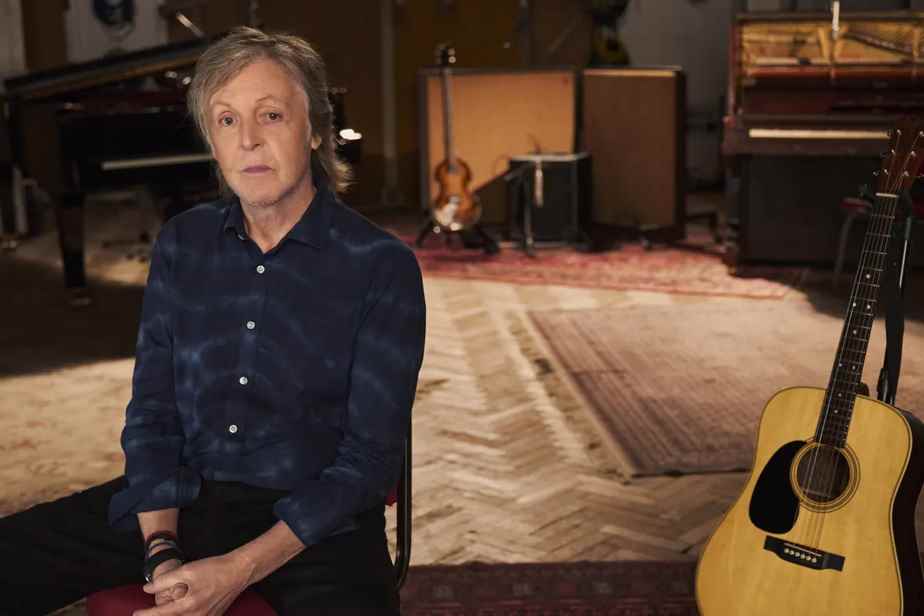It is a mythical place.
A reference.
A place of pilgrimage.
Its name alone evokes the Beatles and one of their best albums.
Not to mention the dozens of successes produced on site, Goldfinger (Shirley Bassey) at wonder wall (Oasis), passing by The Dark Side of the Moon (Pink Floyd) and Star Wars music.
One day, the story of Abbey Road studios had to be told, and it is now done with the documentary If These Walls Could Sing (Behind the walls of Abbey Road Studios), offered since Friday on Disney +, which looks back on the 90 years of existence of this temple of recording located in the St John’s Wood district, in London.
Let’s be honest, this film is primarily aimed at fans of the Beatles in search of a new “fix”.
Firstly because it was produced by photographer Mary McCartney, daughter of Linda and Sir Paul, who is working on directing for the first time.
Then because most of the story revolves around the Fab Four, from love me Do in 1962 to the famous cover of the group crossing the pedestrian crossing of Abbey Road. Legitimate choice: they are the ones who put these studios on the map and made it possible to extract the most amazing sounds, with the complicity of producer George Martin.
Paul McCartney and Ringo Starr are necessarily among the distinguished guests interviewed here. But their anecdotes, delivered in the vaguely intimate half-light of studio 1, do not bring much new to the mystique of the formation. As if we were hearing this scratched record for the thousandth time.
No big revelations either on the side of Elton John, Jimmy Page, Roger Waters, David Gilmour or the two Gallagher brothers (Oasis), also invited to share their memories of these cult studios. In fact, the most original testimony goes to composer John Williams, who has captured some of his most famous soundtracks here (Raiders of the Lost Ark, Star Wars) and is still surprised, 40 years later, that it was possible to drink alcohol in the cafeteria of the studios.
This warmed-up feeling could be offset by the more historical segments. But that is only a tiny part of the documentary. We learn that the studios were opened by the EMI company in 1931 in an old opulent house in North London. That they experienced a lean period in the late 1970s, forcing their owners to make a dramatic “fire sale”. That classical music occupied an important place there before the arrival of pop.
But we quickly come back to Sgt. Pepper and to the grandfathers of rock, who rehash their old refrains.
Not much, either, on the technical aspects. The protagonists of the documentary never cease to marvel at the “sound” of Abbey Road studios. But no one to explain, speculate or theorize about the elements that made this sound possible. What microphones? What consoles? What wood on the walls to reverberate it in this way? What technological innovations over the years? We would have taken more… as we would have liked a more immersive visit to the building.
The mythical studio 1 is filmed from all angles, of course. But why not explore the rest of the building further? Literally and figuratively, we stick to commonplaces.
If These Walls Could Sing remains a sumptuous documentary. Aesthetically irreproachable, with its sometimes rare archival documents, presented in “split screen” format, a nod to the heyday of the 1960s. Despite its heavy Beatlesque tendency, the film also manages to reflect the eclecticism of this tube factory, whose productions have ranged from the classic of Jacqueline du Pré to the afrobeat of Fela Kuti. Finally, the guests are not two of spades.
But for privileged access, we’ll come back. Despite her pass, Mary McCartney flies over her subject without going into depth and offers a purring, formatted film, which ends up stretching in length, despite its short duration.
Disappointing for anyone hoping to penetrate the heart of the bowels of these cult studios.

If These Walls Could Sing
Mary McCartney
